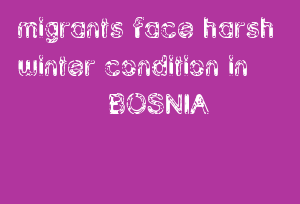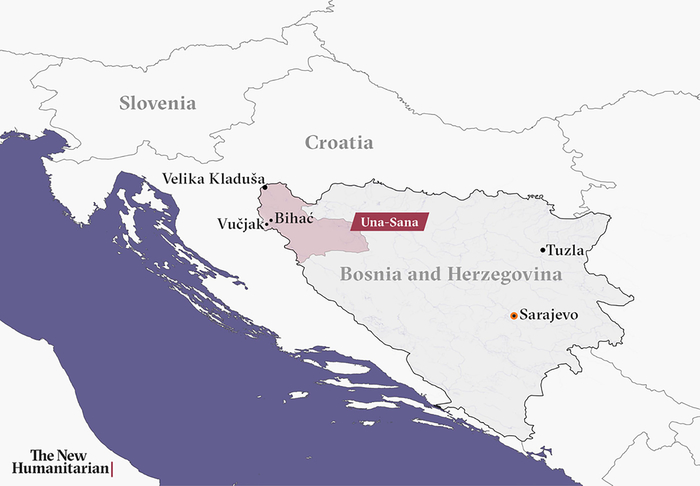profile/239120190910_105059.jpg
Benbruce

Migrants Face Harsh Winter Condition In BOSNIA
~3.9 mins read
Since 2016, Bosnia has been an unintended waystation for people fleeing conflicts and poverty in the Middle East, South Asia, and Africa and seeking a path to northern or western Europe through the Balkans after crossing from Turkey to Greece.
The UN’s refugee agency, UNHCR, has recorded the arrival of nearly 68,000 people in the country since 2018. Most are looking to transit through to EU member state Croatia, and beyond, but end up stuck because Croatian border police systematically – and often violently – push asylum seekers and migrants back across the border, according to human rights groups.
Even people who reach as far into the EU as Italy are sometimes subjected to chain pushbacks across several Balkan countries that end with them being expelled from the bloc and landing back in Bosnia.
Around 3,000 migrants and asylum seekers – mostly in the northwestern canton of Una-Sana, bordering Croatia – are currently sleeping rough in Bosnia in abandoned buildings, tents, and makeshift camps, the UN's migration agency, IOM, told The New Humanitarian via email.
That number is expected to grow.
For years, authorities in Una-Sana have argued that official camps act as a pull factor, attracting asylum seekers and migrants to the region. At the end of September, they left hundreds homeless when they made good on long-standing promises to close an IOM-run camp with the capacity to house 1,500 people in Bihać, the area’s main city.

Authorities in the canton have repeatedly said they plan to close another camp, in the northwestern border city of Velika Kladuša, which would leave around 1,000 additional asylum seekers and migrants without accommodation. A third camp in Una-Sana, opened in April and currently housing around 1,500 people, is not “winterised†and will likely become unlivable as the cold Balkan conditions intensify towards the end of December.
In 2019, there were also concerns about a lack of adequate housing for asylum seekers and migrants in Bosnia and Herzegovina heading into winter. But this year, the problem appears to be worse.
“Last year, I was confident we would find a solution, and solutions were available; we finally managed to open another camp,†Peter Van der Auweraert, IOM’s Western Balkans coordinator and Bosnia representative, told TNH. “Now, it’s well past five to midnight, and we still don’t have an alternative.â€
The housing crisis is also being complicated by the coronavirus pandemic. With a population of around three million, Bosnia and Herzegovina has registered 89,081 cases of the virus and 2,728 deaths as of 1 December. The number of new infections has been rising since mid-October, and is now averaging 1,200 to 1,500 new cases per day compared to under 100 per day during the first wave of the pandemic, from April to June.
So far, the number of recorded infections among asylum seekers and migrants remains low, but from the beginning of the pandemic some politicians have scapegoated asylum seekers and migrants as “virus spreadersâ€, “security threatsâ€, and an “economic burdenâ€, adding to longstanding stereotypes of them being criminals and thieves.
As the environment has grown more hostile, vigilantes have begun targeting asylum seekers and migrants with violence and there has been an uptick in reports of in-person and online harassment, including of humanitarian volunteers, according to aid workers.
profile/239120190910_105059.jpg
Benbruce

The Coronavirus Has Landed In Antarctica
~1.9 mins read
Advertisement

Link socials
Matches
Loading...
